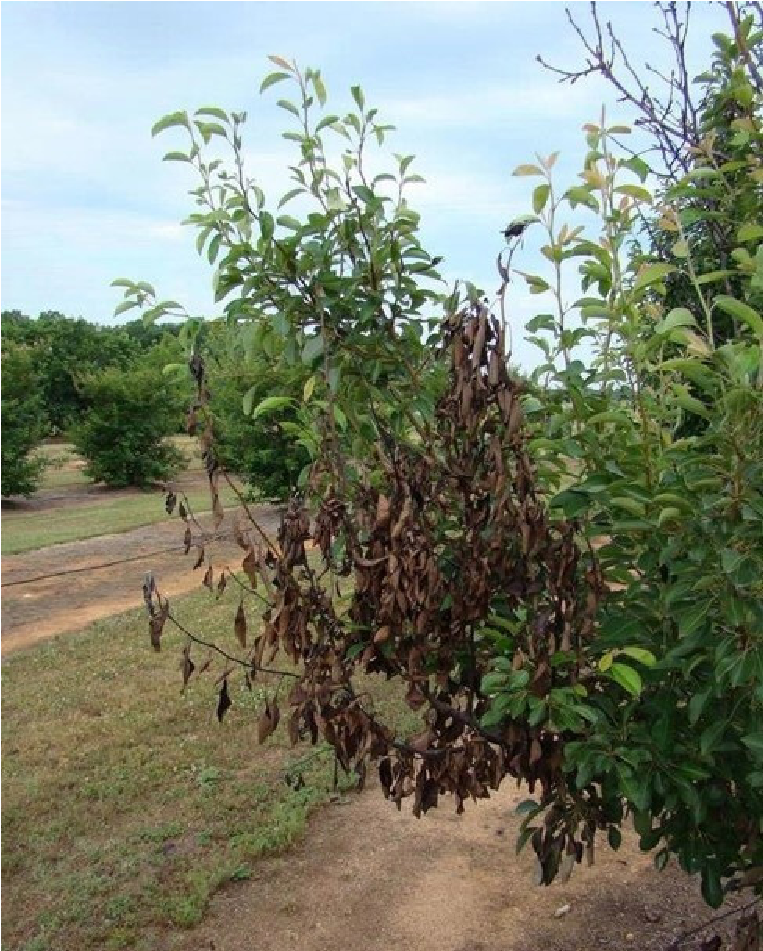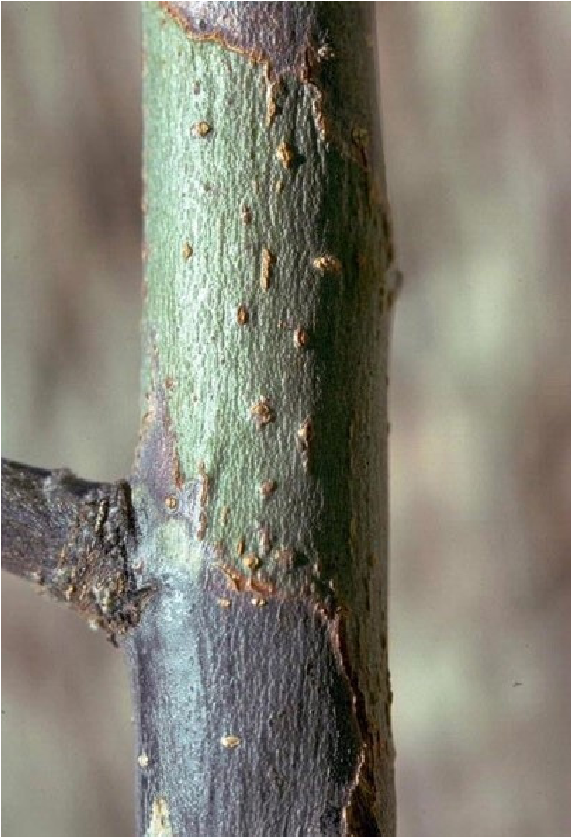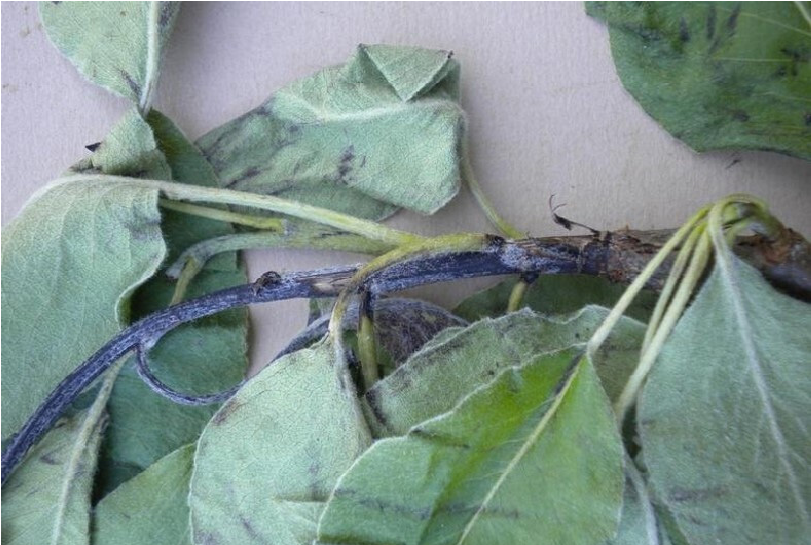Fire Blight (Scientific Name of Pathogen: Erwinia amylovora - Bacterium)
Hosts:

Figure 1. Dieback of branches due to fire
blight infection. Photo by Rebekah D. Wallace,
University of Georgia, Bugwood.org
Fire blight affects plants in the Rosacea family including apple, pear, crabapple, mountain ash, hawthorn, and cotoneaster
Damage/symptoms:
Infected blossoms develop a water-soaked appearance and turn a grey-green color. Over time the tissue shrivels and turns black, giving it a burned appearance (Figure 3). During periods of high humidity, amber colored drops might exude from the discolored tissues. Infected shoots may wilt rapidly and form a “shepherd’s crook” (Figure 1). Leaves on infected branches turn brown to black and may persist on the branches during fall and winter. Sunken cankers may also develop on branches (Figure 2).
Disease cycle:
The bacteria overwinter in cankers and ooze out of infected tissues in spring when the humidity is high. Insects are attracted to the ooze and transfer the bacteria to flowers. The

Figure 2. Dark, sunken canker indicates a fire blight infection. Photo by William
Jacobi, Colorado State
University, Bugwood.org.
bacteria can also be transferred by splashing rainwater and during cultural practices (e.g., pruning). The bacteria grow when temperatures are between 70-80°F, multiplying and invading surrounding plant tissues.
Management:
Select disease resistant cultivars. Prune out and remove all infected twigs and branches during dry winter weather. Disinfect the pruning tools between cuts with 70% ethyl alcohol or a standard household disinfectant spray to avoid spreading the bacteria. Check plants regularly in spring and prune out symptomatic tissues. Copper sprays can be applied in early spring just before buds swell to manage this disease. Avoid using copper products every year and strictly follow instructions on the product label. Antibiotic spray applications are not recommended in the urban

Figure 3. Tree branch is turning black with progressing fire blight infection. Photo
by Elizabeth
Bush, Virginia Polytechnic Institute and State University, Bugwood.org
setting.
By Eva Grimme, MSU Associate Extension Specialist III. February 2024. For more information, contact diagnostics@montana.edu.
This March 2024 fact sheet is also available as a printable PDF (419KB).
Disclaimer: These recommendations are provided only as a guide. It is always the pesticide applicator’s responsibility, by law, to read and follow all current label directions for the specific pesticide being used. The authors and Montana State University assume no liability resulting from the use of these recommendations. The Montana State University Extension Service is an ADA/EO/AA/Veteran’s Preference Employer and Provider of Educational Outreach.
